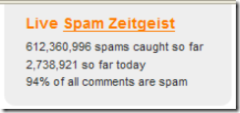You are in an airport at dinner time. You are hungry. Do you:
- Grab some food from a fast food vendor/pushcart, go to your gate area, put your music player headphones on and tune out everyone around you while you eat.
- Grab some food from a fast food vendor/pushcart, go to your gate area and start talking to the people around you while you eat.
- Go to an airport restaurant, sit down alone at a table, bury your nose in a book and/or put your music player headphones on and zone out while eating.
- Go to an airport restaurant, sit down alone at a table and attempt to strike up random conversations with the people sitting next to you, who are also dining alone (and who aren’t buried in their book or music player)
Given that on any personality test like Myers-Briggs, I pretty much max out the Extrovert scale (big surprise, eh?), you can imagine that my choices are usually either #2 or #4. I’ve learned over the years (painfully, sometimes) that extroverts like myself can be sheer horror for our polar opposites, the extremely introverted. And even the extroverted sometimes want to just zone out or have some peace (there are times when I want that!)…. so I won’t intrude if someone looks adamant that they want their space. But if someone is open to a conversation, I’m usually more than happy to join in… for one basic reason:
Everyone has a story to tell and you can always learn interesting things from random conversations.
Take last week. I was travelling home from Atlanta and was stuck in Newark for a couple of hours. I went into …
… a Pizzeria Uno restaurant and sat down for my incredibly healthy dinner
of a beer and a small sausage pizza. I was on the end table in a long
row of 2-person tables. There was an empty table next to me, and then a
table with another single gentleman (also with a beard, albeit all
grey, and also ordering a beer and a sausage pizza), and empty table
next to him and then at the other end of our 5-table row, a young
couple (also having beer and pizza). It was about 8pm and as President
Bush was to give his State of the Union address at 9pm the TVs were
full of the usual pre-State-of-the-Union predictions, analysis,
guessing, etc. We all sat there, nursing our beers, until one of the
couple said something like "So what’s he (Bush) really going to say of
any value?"
Ice broken. Conversation can ensue.
Of course,
politics can often be a deadly thread to follow, given the passion
involved, and so I’ll often choose not to lead with that topic. I guess
the good news is that the vast majority of the USA right at this
particular moment in time is united in their disapproval of the current
administration’s policies (which, in and of itself, is a fascinating
state of affairs), so you turn out to be fairly safe with that tack.
The
political discussion dwindled (I mean, what, really, can you say when
all in agreement?) and I wound up having a longer chat with the other
gent next to me. He turned out to work for a company in Pennsylvania
that repairs and restores church pipe organs. He’d just returned from
Bermuda where he was looking at an organ there that a church would like
repaired. The big issue in that tropical part of the world turns out to
be termites! They’d eaten significantly into the wood of the
organ console, but they now appeared to be gone and hadn’t gotten into
the assembly supporting the pipes. Given that the church I go to in
Burlington, VT, just recently had its own pipe organ refurbished and
that I have a bit of an interest in older musical instruments and
moreso in older crafts, it was a fascinating conversation. It turns out
that one of the vulnerable areas in pipe organs is the leather used to,
if I understood it correctly, essentially cap off the bottom of each
pipe when it is not being sounded. I learned that some of the leather
used in very old organs is still holding up today, while some of the
leather used in later years was not as good quality and decayed more
rapidly… and that pretty much all the leather used in organs today
comes from, I think, a few farms in… I want to say… Australia or
something like that. That when new pipes are made for pipe organs, they
are still made in the same fashion as hundreds of years ago, with each
pipe made and soldered by hand… which accounts for the fact that new
pipe organs are likely to cost upwards of $500,000 USD and why most
churches look to refurb what they have. That in all the refurb/repairs
that they do, the organ console includes digital elements. We talked
about the change in pianos today (hint: you can’t really find a "real"
piano in stores anymore, they are almost all synthesizers with weighted
keys)… and a myriad of other subjects.
Fascinating
conversation over a beer and a small pizza… and one of the reasons
why I will very often join in or start such random conversations. I’ve
learned an amazing amount over the years on topics that I would never
have even remotely explored on my own but yet which can turn out to be
fascinating.
We all have stories inside, waiting to be told.
Some of us will tell them more easily than others. Some just need
someone to listen and/or ask the right questions. (And some just want
to keep all their stories private.) Some stories are exciting… others
mundane. Sometimes it may take a bit to get to the interesting parts,
but very often I find that people underestimate how interesting their stories may be. (… or perhaps it is just that I find people’s stories fascinating and am always interested in learning more about this amazing species we call humanity.)
What do you do when having dinner in an airport?
 Given that it seemed an interesting (and one-time) experiment, I left a comment on Tino Buntic’s 2000 Bloggers project page and now have been added to the giant page of photos of the 2000 bloggers (WARNING: The page is (Duh!) graphic heavy!) Rather than leave the URL for my personal blog, I left the URL for this new blog, partly as an experiment in site traffic. Being so new, I can get a better view of site-driven traffic… we’ll see. I don’t really know how many visitors would actually come over here as a result of my picture (the same standard one I use on this blog). Now, if my picture had been a bit different or strange or weird, perhaps… Anyway, it’s just another part of the ongoing experiment in all these media.
Given that it seemed an interesting (and one-time) experiment, I left a comment on Tino Buntic’s 2000 Bloggers project page and now have been added to the giant page of photos of the 2000 bloggers (WARNING: The page is (Duh!) graphic heavy!) Rather than leave the URL for my personal blog, I left the URL for this new blog, partly as an experiment in site traffic. Being so new, I can get a better view of site-driven traffic… we’ll see. I don’t really know how many visitors would actually come over here as a result of my picture (the same standard one I use on this blog). Now, if my picture had been a bit different or strange or weird, perhaps… Anyway, it’s just another part of the ongoing experiment in all these media.
 When you die, what happens to your blog(s)? What happens to all that writing? Think about how things have changed… traditional “writers” have always left behind their writings. On paper, in journals/diaries, in printed books and magazines. Perhaps out in public view or perhaps in the “box up in the attic”. However they are stored, the writings survive the death of the writer and then are seen some day by family or perhaps by researchers. Indeed, historians relish finding old caches of (snail-mail) letters, diaries, unfinished books or poems. Famous (or wealthy) people have bequeathed their “papers” to a library, often at the university they attended. Families pass down the “family bible” through generations. It’s all part and parcel of how we have accounted for – and preserved – our history as a culture. Often the historians prize most the “everyday” writings… the letters… the postcards… the brief notes… as they offer a glimpse into a distant era.
When you die, what happens to your blog(s)? What happens to all that writing? Think about how things have changed… traditional “writers” have always left behind their writings. On paper, in journals/diaries, in printed books and magazines. Perhaps out in public view or perhaps in the “box up in the attic”. However they are stored, the writings survive the death of the writer and then are seen some day by family or perhaps by researchers. Indeed, historians relish finding old caches of (snail-mail) letters, diaries, unfinished books or poems. Famous (or wealthy) people have bequeathed their “papers” to a library, often at the university they attended. Families pass down the “family bible” through generations. It’s all part and parcel of how we have accounted for – and preserved – our history as a culture. Often the historians prize most the “everyday” writings… the letters… the postcards… the brief notes… as they offer a glimpse into a distant era.

 Given that I know some of the folks reading here are interested in SecondLife, you may be interested in my post over on my DisruptiveTelephony blog about
Given that I know some of the folks reading here are interested in SecondLife, you may be interested in my post over on my DisruptiveTelephony blog about 
